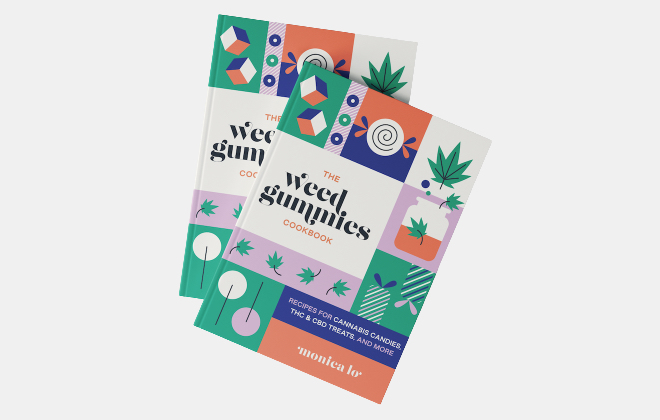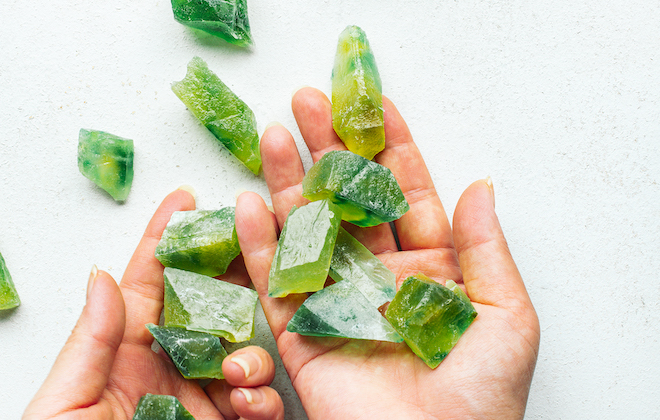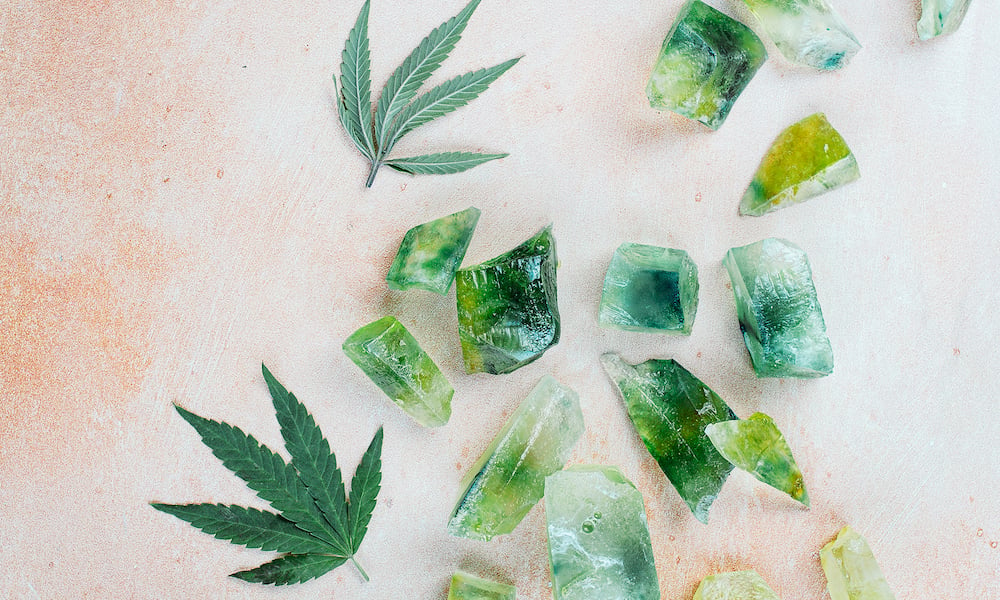After Monica Lo was put on pain medication for a herniated disc, she decided to switch to edible cannabis for something that was easier on her system. Though with a strict landlord, discretion was key. And that’s where a sous vide came in.
At the time, Lo was working as a creative director of a sous vide startup. Edibles turned out to be just as sous vide friendly as steaks are. She started Sous Weed, a website on sous vide cannabis cooking, in 2015 as an edibles resource for experts and beginners alike, spotlighting modern recipes that pay homage to her Taiwanese American background.
Cannabis culture was a lot different back then. Only four states (Colorado, Washington, Alaska, and Oregon) allowed recreational sales. Reliable edibles were still an unknown in most parts of the country. Today, a seemingly endless number of edible brands in various strengths and styles line recreational shop shelves in nearly half of the states across the country. By one measure, edibles make up as much as 12 percent of cannabis sales in legal recreational states.
But even now, there’s an important place for DIY edibles, Lo tells me in an email. And her new book, The Weed Gummies Cookbook: Recipes for Cannabis Candies, THC and CBD Edibles, and More, is the perfect example why. From the basics of infusion to recipes for caramels and hard candies, Lo lays out everything one needs to know to make their own. I tested out a few of the simpler recipes and even I, someone who has never made candy in his life, was able to turn some home grown into enjoyable edibles.
I caught up with Lo about how things have changed since she started Sous Weed, the joy of cooking with cannabis, and a favorite recipe of hers for homemade edibles that stand out even in a world full of ready-to-eat cannabis.
Buy Now $18This interview has been edited for length and clarity

Cool Material: What has been the one thing that you feel has bettered your approach to creating edibles over the years since you started Sous Weed in 2015?
Monica Lo: Go beyond cannabutter! I keep my pantry stocked with all sorts of infused cooking oils, tinctures, sugars, and honey. It makes it easier to adapt and infuse both sweet and savory recipes. I especially love infused lard for extra crisp and flaky pastry or infused sesame oil for Asian recipes.
Making oil or butter feels attainable, but hard candies and gummies feel so much harder. What’s your advice on how people should get started if they’re intimidated by the more involved recipes?
There are so many different methods to make the base infusions for your edibles — from stovetop to sous vide, coconut oil to alcohol tinctures, I cover it all in the book.
I’ve designed The Weed Gummies Cookbook to be as user-friendly as possible in hopes of empowering readers to make their own cannabis edibles at home. That said, the book starts easy with the gummies chapter and gets a little more challenging in the soft caramels and hard candies chapters. Those chapters require a candy thermometer, proper equipment, and safety protocols! Sugar burns are pretty gnarly and no one likes to waste cannabis on a burnt batch of candy. Practice and have patience, my friends!
We’re in a bit of a golden era for edibles (at least in states with legal recreational cannabis). Why should people consider making their own edibles versus heading to a dispensary?
There are so many reasons why DIY is the way to go. In 2021, cannabis edibles sales in medical and recreational states began to skyrocket as an impact of the COVID-19 pandemic. We started to see consumers choosing edibles, specifically gummies and candies, over inhalable forms of consumption. On the flip side, as states began to legalize medically and recreationally, dispensary prices also began to rise due to taxes and operating costs. There are also state mandated regulations on dosages and serving sizes which can be challenging for patients who need more than what is on the shelves. Dispensary edibles also have to be shelf stable for a few months to a year.
It’s more cost-effective to DIY, and you can make your treats without the commercial preservatives and also customize the dosage to your body’s needs. You can get strain-specific or cannabinoid-specific and cook with your favorite flower. Plus, they make for great gifts during the holiday season!
If you could share one recipe from your book for a reader who would like to get into making edibles, what would it be?
I really adore the Gemstone Gummies recipe. It will test your patience but it’s a seriously stunning-looking treat with a crunchy exterior and a gummy center. The fun part is swirling together your favorite colors. Once the gummies are cured, after a few days, a sugar crust will crystallize on the surface and look exactly like a gemstone.

Photo: Monica Lo
Gemstone Gummies Recipe
Excerpted from The Weed Gummies Cookbook by Monica Lo, courtesy of Ulysses Press
Makes 32 pieces
Equipment:
- 8-inch square baking pan
- Fine-mesh strainer
- Toothpicks
- Disposable gloves
Ingredients:
- 3 cups granulated sugar
- 6 teaspoons agar-agar powder
- 2 cups cold water
- 1/4 cup cannabis-infused sugar*
- 1/2 teaspoon super-strength candy flavoring of your choice
- Food coloring of your choice
Directions:
- Line an 8-inch square baking pan with a sheet of parchment paper. Crease the corners along the inside edges and leave a 1-inch overhang on each side of the pan. Lightly coat with nonstick spray.
- Add the granulated sugar, agar-agar powder, and water to a medium saucepan and stir with a silicone spatula to combine.
- Turn the heat to medium and bring to a boil. Lower the heat and simmer for 8 minutes to activate the agar-agar and thicken the mixture, stirring often. Remove from the heat and add the cannabis-infused sugar and your candy flavoring of choice, stirring until the sugar has dissolved into the mixture.
- Pour the mixture through a fine-mesh strainer into the prepared baking pan. Using toothpicks dipped in food coloring, make colorful swirls in the mixture while still warm. Transfer to the fridge to cool until firm, 1 to 2 hours.
- Remove from the pan by pulling on the parchment paper. Slice the slab into eight 1-inch strips. Wearing disposable gloves, roughly rip the gummies into 1 x 2-inch pieces and place onto a parchment paper–lined baking sheet.
- Allow to dry in the open air at room temperature for two to four days, rotating sides each day, until a hard sugar crust has crystallized on the exterior. Store in an airtight container or candy bags for up to a month.
*The cannabis-infused sugar recipe can be found in The Weed Gummies Cookbook by Monica Lo. Order anywhere books are sold.




